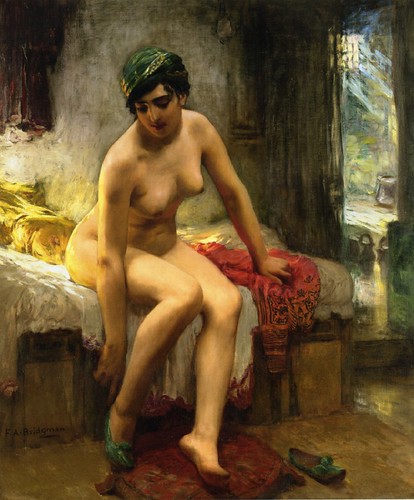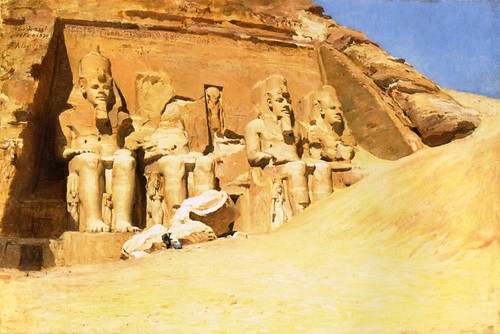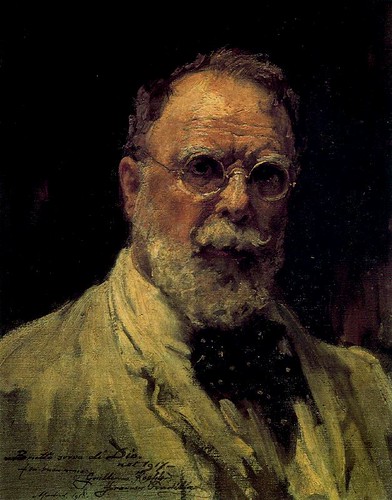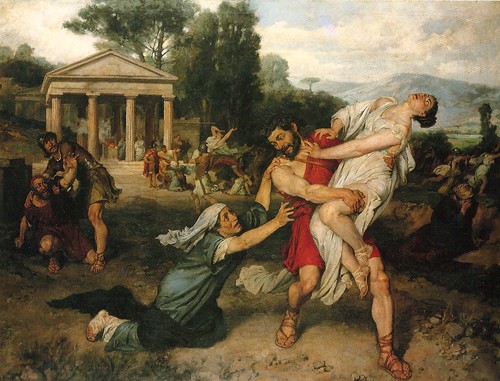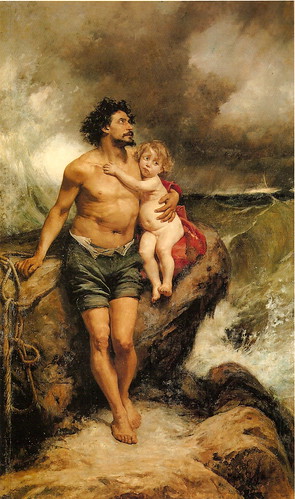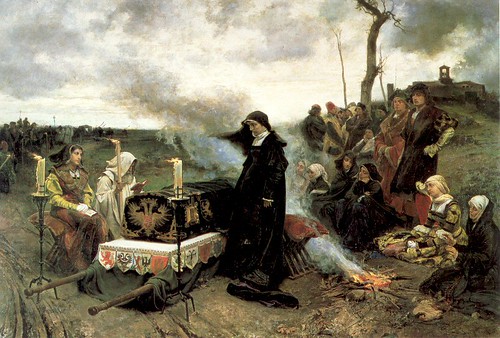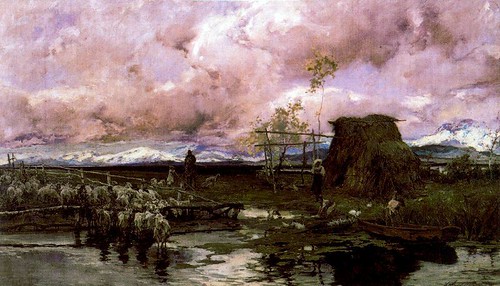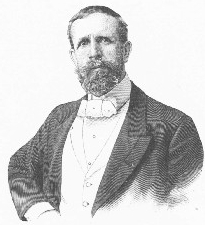
Frederick Arthur Bridgman, c. 1900
Bridgman was a born in Tuskegee, Alabama and died in Rouen, France in 1928. Joining other talented American painters, such as Thomas Eakins, he studied at the Ecole des Beaux-Arts in Paris in the studio of Jean-Léon Gérôme (1824-1904) from 1866 to 1870. Bridgman regularly participated in the Paris Salon and, in 1907, he was awarded the Légion d’Honneur. During his long and prolific career, Bridgman traveled to Morocco, Algeria, Egypt, Turkey and Syria to paint and document local customs.
Frederick Arthur Bridgman. Aicha, a Woman of Morocco (1883) Oil on canvas. 21 1/2 BY 10 1/2IN. Newark Museum, New Jersey.
Some may object to labelling Bridgman as a "forgotten" master. His paintings regularly turn up at auctions and he is familiar to many nineteenth-century painting dealers and collectors. I submit that he is forgotten for two reasons: first, his work is rarely recognized on its own merit and second, his tendency to be self-promotional has deterred others from telling his story.
Frederick Arthur Bridgman. After the Bath. Oil on canvas. 31 BY 25 3/4IN. Private collection.
After nearly a century of obscurity, Orientalist painters have found their way into the limelight. Paintings by Bridgman, Max Ernst (Austrian, 1891-1976), and John Frederick Lewis (British, 1805-1876) have sold for higher prices at auction and, recently, been the subject of a major exhibition at Tate Britain. According to conversations I have had with auctioneers at Sotheby's and Christie's in London, increased interest has been driven by Middle-eastern collectors who often see orientalist paintings as the sole visual record of their nineteenth-century cultures.
As a result, interest in Bridgman's paintings is rarely driven by an appreciation for his skill or creativity. Rather, Bridgman is grouped into a genre. To my knowledge, since his death, there has not been a biography or single exhibition in a major museum dedicated exclusively to Bridgman.
Frederick Arthur Bridgman. Abu Simbel (1874) Oil on canvas. 20 BY 30IN. Private Collection.
In the 1870s, Bridgman traveled to Algeria on a painting expedition. In addition to canvases, Bridgman took copious notes that, eventually, became a feature article in Atlantic Monthly Magazine. The article, along with reproductions of paintings from his trip have recently been reprinted in book format.
Frederick Arthur Bridgeman. Crossing an Oasis, with the Atlas Mountains in the Distance, Morocco (1919) Oil on Canvas. 13 BY 19 1/4IN. Private collection.
After World War I, Bridgman settled in Normandy, France. Although he continued to paint, his paintings were no longer shown publicly. He died in 1928 in near obscurity. Links
- A blog dedicated to Bridgman with several images.
- Frederick Arthur Bridgman at the Anthenaeum includes over 35 images of Bridgman's paintings available for free use.
- A longer biography on the artists taken from the book Les Orientalists de L'École Américaine by Gerald M. Ackerman.
Books
- Winters in Algeria by Frederick Arthur Bridgman
- Orientalists by Kristian Davies
- The Orientalists by Lynne Thornton

